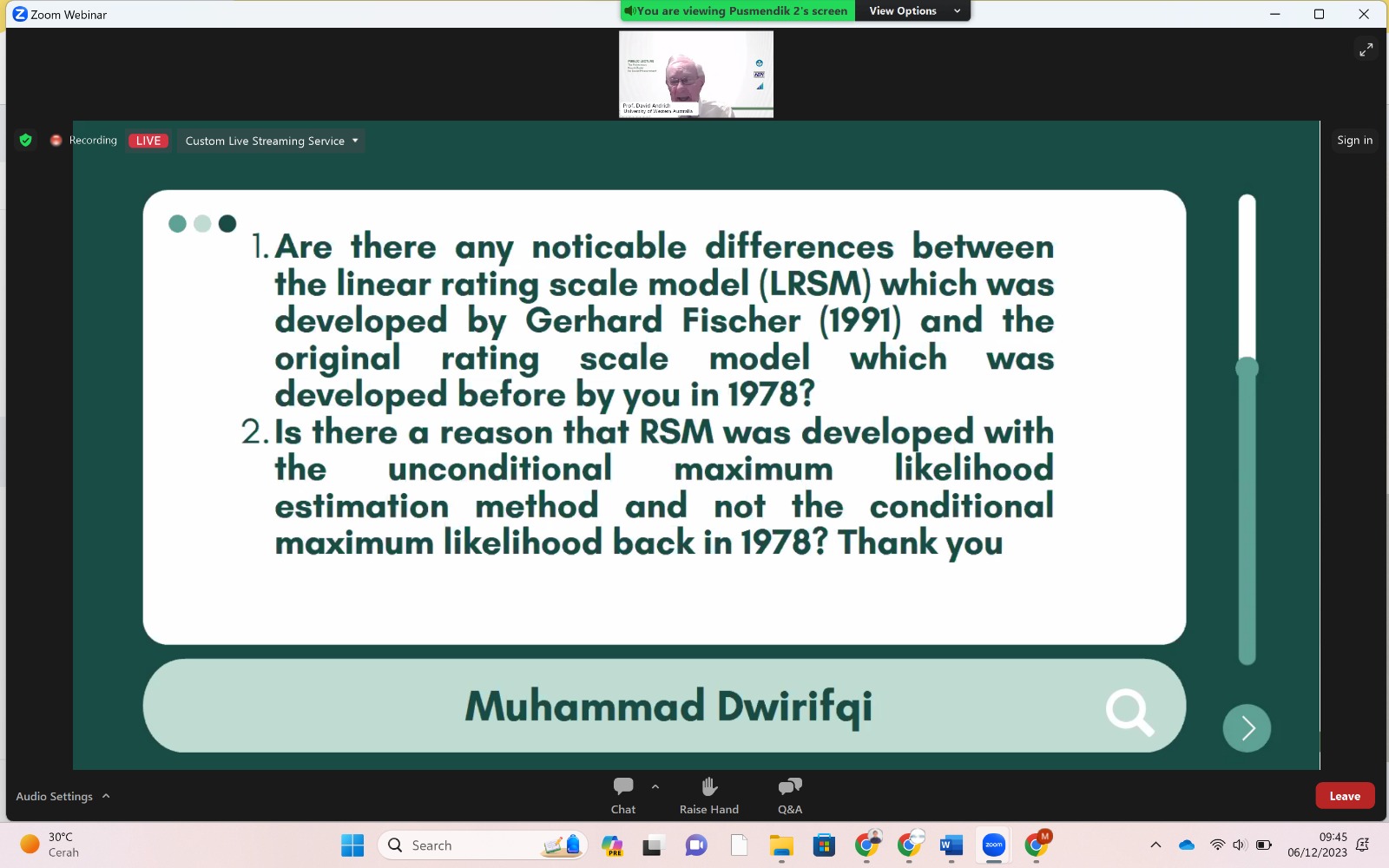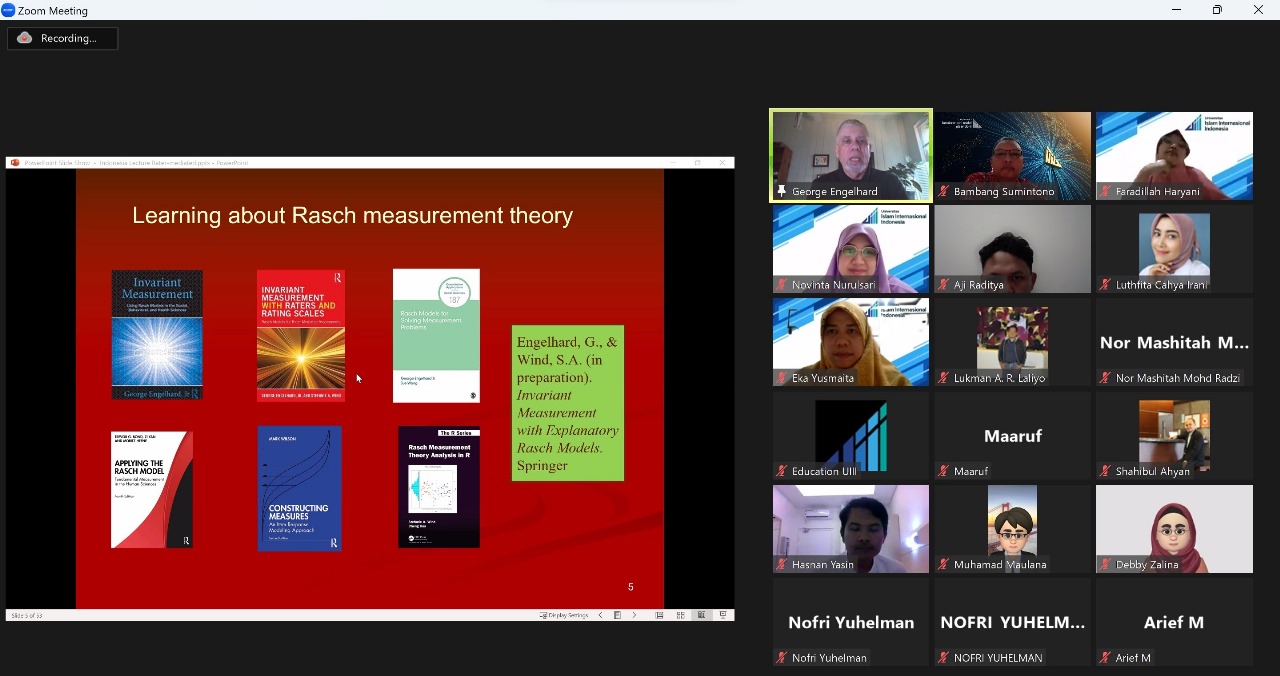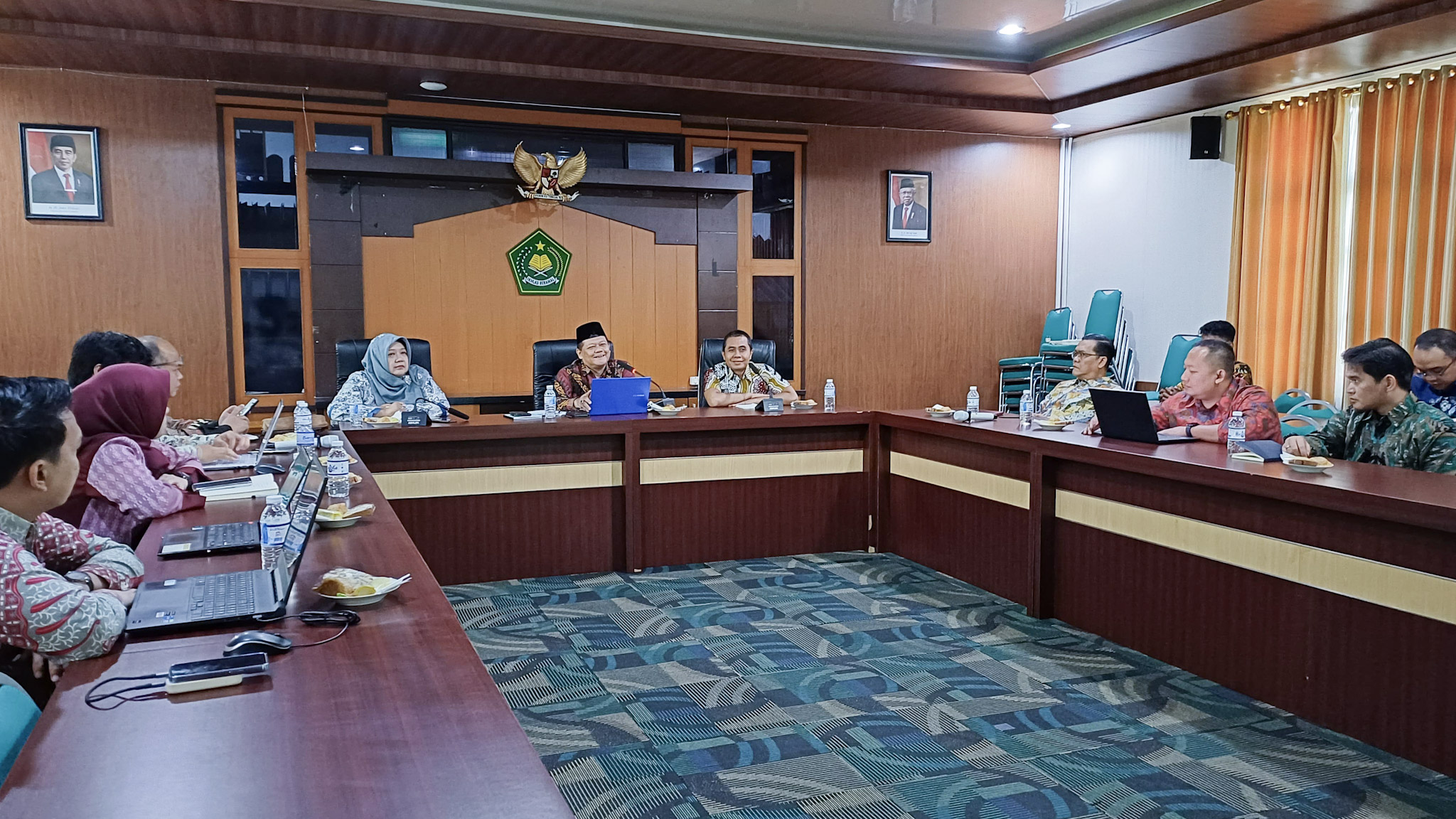Exploring the Depths of Rasch Model with Prof. David Andrich
December 12, 2023Contributor: Maroof Ahmed | Editor: Supriyono

In a public lecture hosted on Dec. 6, 2023, Prof. David Andrich, Emeritus Professor in the Graduate School of Education and Senior Honorary Research Fellow in the Medical School at the University of Western Australia, shared his extensive insights into the Polytomous Rasch Model for Social Measurement, highlighting its pivotal role and enduring relevance in educational assessment and social research.
Organized by the Center for Educational Assessment (Pusmendik), in collaboration with the Indonesian Educational Evaluation Association (HEPI) and the Universitas Islam Internasional Indonesia (UIII), the event was moderated by Dr. Bambang Sumintono, Head of the Doctoral Program at UIII’s Faculty of Education.
The lecture illuminated the depths of Georg Rasch's work, marking 50 years since Prof. Andrich's scholarly journey began. "It's been a rich 45 years since that seminal 1978 paper, with the implications of Rasch's work for ordered category data continually unfolding," said Prof. Andrich.
Prof. Andrich meticulously outlined the significance of ordered category data within the Rasch Model, emphasizing the need to comprehend its implications thoroughly. "I worked on that for three or four years after my Ph.D. to work out the implications of what Rasch was saying for ordered category data," he said. The dedication to the subject was palpable as he walked the audience through various aspects of the model, from equidistant thresholds to the implications of reverse thresholds.
Moreover, Prof. Andrich highlighted the inherent connection between the Rash Model's ordered thresholds and the concept of randomness in measurement. "The Rash distribution in the model is a discrete form of the normal distribution," he explained. This point is a testament to the model's robustness and seamless integration with traditional measurement principles.
As Prof. Andrich progressed, he underscored the criticality of the model's algebra, which ensures that the comparison between instruments remains independent of the objects of measurement. He noted: "The model is derived from the algebra of this requirement." Prof. Andrich's elucidation of the mathematical underpinnings conveyed a sense of elegance and precision that underlies the Rash Model's framework.
The lecture was a retrospective and a forward-looking reflection on the model's relevance. Prof. Andrich made it clear that understanding the distribution of probabilities within the model is paramount. "This is an example of an item with ten thresholds. These thresholds are not equidistant," Prof. Andrich demonstrated, making the complex concepts accessible to the audience through vivid visualizations and patient explanations.
Another highlight from the lecture was Prof. Andrich’s discussion on the implications of reverse thresholds, a situation where the expected order of threshold values is not maintained, leading to interpretational challenges. "What is the implication of this in this region?" he questioned, pointing to a graph, "If someone happens to be here, this is the distribution." The professor's ability to distill such nuanced details into comprehensible insights was a testament to his expertise.
Prof. David Andrich’s lecture was not merely an academic exercise but a profound exploration of the Rasch Model's foundational principles and their practical applications in educational assessment. His parting wisdom emphasized the necessity for examiners and educators alike to revisit the model's core tenets when faced with data anomalies. The UIII community and its associates were left with much to ponder on the model's capacity to shape educational assessment practices for years to come.
- UIII Extends Application Deadline for 2025 International Admissions
- What Does Eid al-Fitr Mean for the UIII Academic Community?
- UIII PhD Scholar Ararat Kostanian Delivers Lecture at Armenia's Yerevan State University
- Swedish Ambassador to Indonesia Applauds UIII’s Vision, Explores Future Collaboration
- Depok Mayor Supports UIII as the Green Lung of Depok and Beyond
- Depok Mayor Pledges to Build Performance Hall at UIII
- New Parking Facility Launched, Part of UIII-Sentra Medika Hospital Partnership
- Yogyakarta’s UII Won 1st FisFastFest’s Clash of Campuses
- Vice Minister of Religious Affairs Praises UIII as a Global Hub for Islamic Education
- Hurray!! UIII Wins Football Championship


